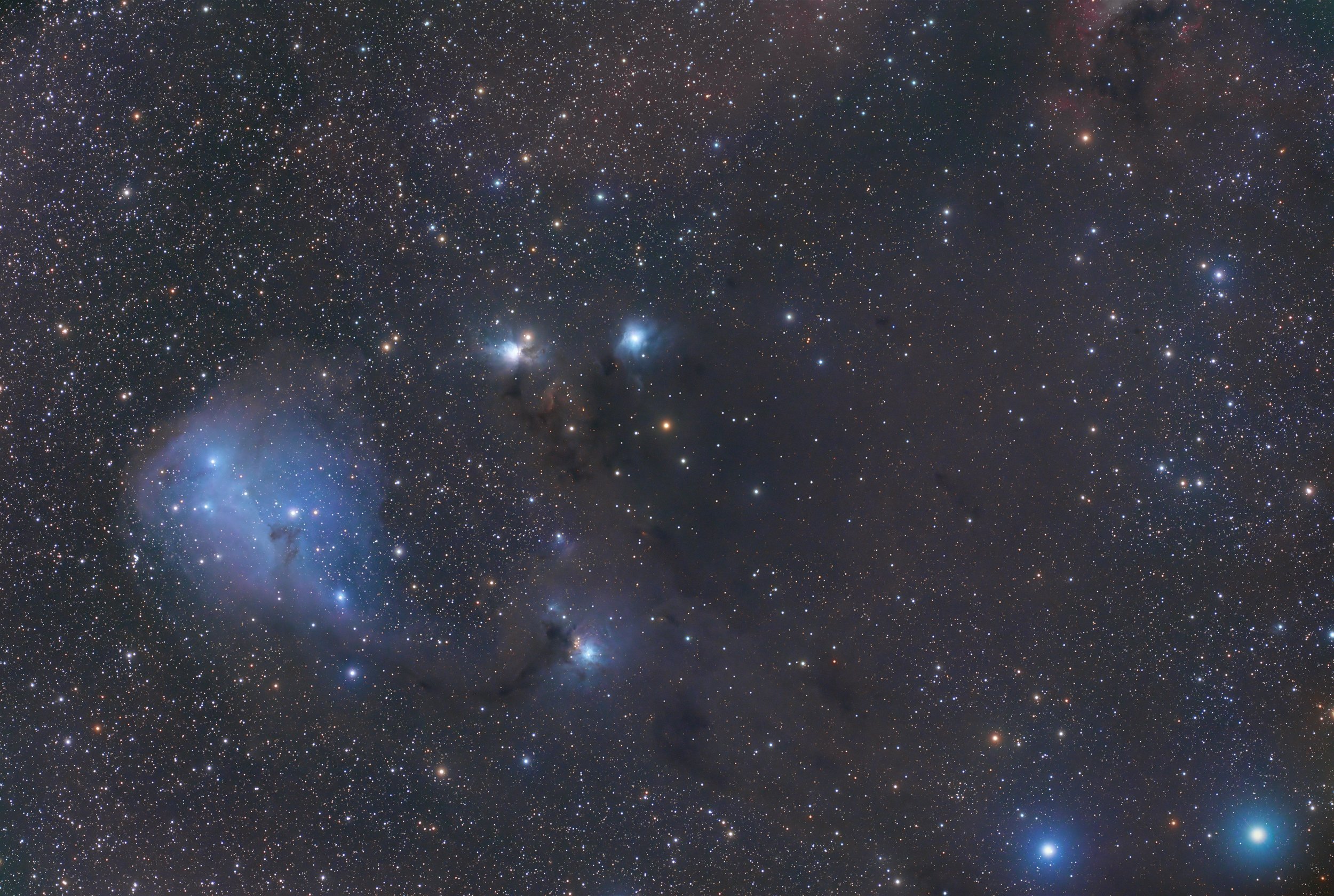
AAPOD2 Image Archives
The Space Waterfall (vdB14 and vdB15) in HaLRGB
Captured under the pristine Bortle 3 skies of Northern Spain, this striking image showcases the stunning vdB 14 and vdB 15, an enchanting reflection nebula pair often referred to as the Space Waterfall. The nebulae reside in the constellation Camelopardalis, a lesser-known yet fascinating region of the northern sky, located approximately 900 light-years away from Earth.
vdB 14 and vdB 15 are illuminated by nearby stars, which lend them their bluish hue. These stars reflect light off the surrounding interstellar dust, creating the glowing veils seen in this image. The nebulae are part of a vast molecular cloud complex that also contains darker patches of cosmic dust, seen as silhouetted regions against the surrounding star field.
This wide-field image combines data from hydrogen-alpha (Ha) and LRGB channels, expertly processed to bring out the rich interplay of light and shadow. The Ha signal highlights faint hydrogen emissions within the nebulosity, adding depth and contrast to the scene. The "waterfall" effect arises from the structured filaments of dust and gas, cascading through the field of view and giving the nebula its poetic nickname.
Located in a remote observatory in Northern Spain, this region's dark and stable skies provide the perfect setting for capturing such faint and intricate cosmic features. The image captures not only the beauty of vdB 14 and vdB 15 but also the elegance of the wider cosmic canvas, with a wealth of faint stars and distant galaxies completing the scene. A reminder of the endless wonders waiting to be explored in the quieter corners of our galaxy.
Bat Out of Hell - Fire and Brimstone Edition AKA (The Eastern Veil)
The Eastern Veil Nebula, also known as NGC 6992, is a spectacular celestial spectacle that comes to life in this captivating narrowband image. Located in the constellation Cygnus, this intricate nebula is a remnant of a supernova explosion that occurred thousands of years ago, carving out a mesmerizing cosmic tapestry.
In this narrowband view, the image highlights the delicate filaments and tendrils of the Eastern Veil Nebula, which are rich in hydrogen-alpha, sulfur, and oxygen emissions. These specialized filters reveal the nebula's intricate structure and intricate details, with vibrant hues of red, green, and blue.



